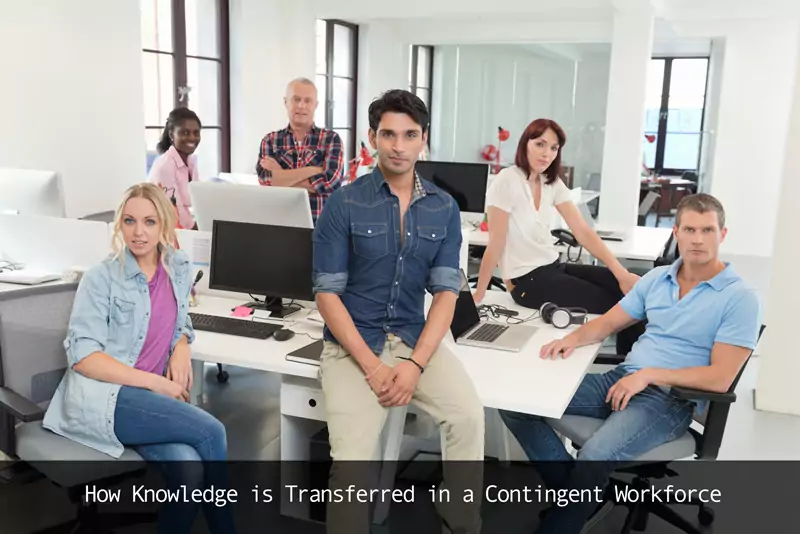Knowledge Transfer in a Contingent Workforce

As discussed in our recently published white paper, Measuring the Impact of Contingent Workers, contingent workers constitute an ever-growing portion of the workforce. While large numbers of contingent workers can place unanticipated strains on an organization, they also bring new resources into an organization, albeit ones that can be difficult to capture. One notable gain is spillover knowledge and skills and nowhere is this more apparent than with IT workers. The question is how to capture this spillover or knowledge transfer and use it to support in-house training efforts? 
Like other technologies, information technology (IT) generates what is known as productivity “spillovers.” In short, as IT workers move from firm to firm, their knowledge is diffused. In other words, it’s an example of how a contingent workforce holds the potential to benefit many organizations, because as well-trained workers move from company to company, they bring their knowledge and previous training with them. In the case of IT workers, what is gained is technical know-how. As Prasanna Tambe and Lorin Hitt report in their study, “Job Hopping, Information Technology Spillovers, and Productivity Growth,” “The technical know-how required for implementing new IT innovations is primarily embodied within the IT workforce, acquired through hands-on experience at early adopting firms, and transmitted to other firms through the flow of IT labor, such as the movements of employees, contractors, and consultants.”
The real question is how does this spillover impact training? For example, does this suggest that training is less necessary than it was in the past? More importantly, is there a way to capture know-how being brought into your organization, even if it is only for a few weeks or months?
In response to the first question, the answer is no—significant residual know-how being imported with a new hire does not preclude the need for proper onboarding and future training. While you may not need to train a worker to do their job, you still need to train him or her to do their job well in the context of your organization. What it does mean, perhaps, is that training should focus more on enculturation than skill building (e.g., ensuring new hires are fully aware of your organization’s values). Answering the second question posed here—Is there a way to capture know-how being brought into your organization?—is a bit more challenging. Theoretically, the answer is yes, but how to do this and do it well?
Create a Knowledge Bank Comprised of Employee Knowledge Profiles: By creating knowledge profiles for each of an organization’s workers—even those only floating through for a few weeks or months—you can capture knowledge that may otherwise not be visible or accessible. This can easily be done by creating a questionnaire on know-how both related to the employee’s current position and extending beyond it (don’t assume that the software architect you hired doesn’t also have experience working as a data modeler). The knowledge bank should be accessible to human resources staff, senior managers and anyone else who develops training programs. In addition to helping an organization make the most of their current workforce, a knowledge bank can support training by enabling more training to happen in house using expertise that is already present.
Create In-House Communities of Practice: Formalize communities of practice to ensure that employees engaged in aligned work can share knowledge seamlessly. Encourage senior employees, even those working on a contract basis, to participate and offer incentives to senior employees as needed.
Record Acts of Knowledge Transfer: Finally, it is critical to find ways to record at least some of the information sharing facilitated by the aforementioned communities of practice. As such, organizations are well advised to create online groups for workers to share knowledge, so conversations can be archived and later searched. In essence, the goal is to capture as much knowledge as possible as workers move through an organization, be it for a few weeks or a few months, and to ensure that any knowledge that comes in is captured and can continue to support an organization even after the contingent worker has moved on.